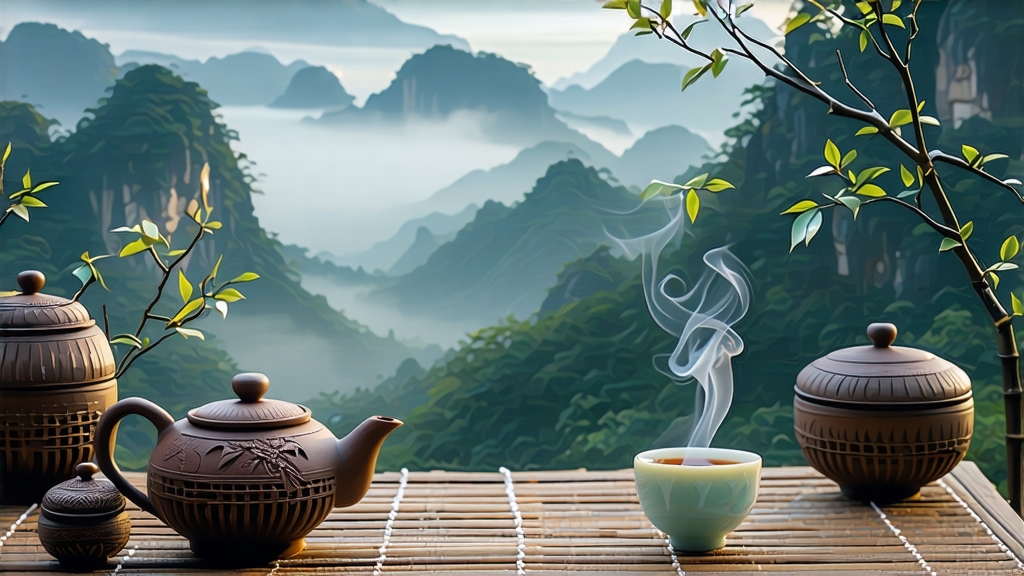
Ask most tea lovers to name a Chinese black tea and they will answer Keemun or perhaps Dian Hong; few realize that the very first black tea ever created was Lapsang Souchong, born in the cool gorges of the Wuyi Mountains in northern Fujian around 1604. Unlike its later cousins, Lapsang was not an imperial accident but a pragmatic response to war: Qing troops were quartered in Tongmu village during late-Ming unrest, delaying the usual green-tea processing. To save the wilting leaves, farmers rushed them over open pinewood fires, inadvertently oxidizing and smoking them into a dark, fragrant novelty that Dutch traders carried to Europe as “bohea.” Within decades this “smoked black tea” eclipsed green teas on London docks, inspired the English habit of adding milk and sugar, and—through plant-smuggling to India—became the genetic forebear of every Assam and Ceylon cup drunk today.
Strictly speaking, only leaf picked within the 600–1,200 m core zone of Tongmu—an enclave protected since 2002 as a national geo-indication—may be called Zhengshan Xiaozhong (“Original-mountain small-sort”). One valley farther out the same cultivar (Fujian qizhong or Wuyi qizhong) yields Waishan Xiaozhong, still pleasant but lacking the resinous sweetness imparted by Tongmu’s sandy laterite soil, mountain mist, and centuries-old pine reserves. Purists therefore divide Lapsang into two families: the traditional smoke-dried and the modern unsmoked, the latter created for contemporary Chinese palates that prize the tea’s natural longan-fruit note over campfire aromas. Both styles share the same four cultivar clones—Xingcun Xiaozhong, Wuyi Caicha, Jiuqu Mei, and the rare Wuyi Qilan Xiao—but diverge dramatically in the final stage of manufacture.
Plucking begins on the first clear morning after Grain Rain when two leaves and a bud reach 4–5 cm, still tender enough to snap silently. The picked leaf is spread on bamboo trays inside ventilated lofts where Wuyi Gorge mist lowers the ambient temperature to 18 °C; this cool withering lasts 8–10 h, softening cell walls without the sun-baking common in Dian Hong production. Once the leaf loses 60 % of its moisture it is rolled: first a 30-minute machine bruising to rupture epidermal cells, then a 5-minute hand-toss in rattan baskets that twists the leaf into the tight “strip” shape that gives Souchong its name. Oxidation follows in cedar-lined troughs; here the master’s nose, not the clock, decides when the grassiness has yielded to apple-skin and honey. For traditional Lapsang the oxidized leaf is now packed into perforated iron drums, lowered into a pit lined with smoldering long-leaf Masson pine that has been aged two years to reduce resin harshness. The smoke must rise through a brick flue so that only fragrant vapor, not flame, reaches the tea; ninety minutes of this “songzhen” (pine-needle fragrance) fixes the leaf at 70 °C, halting oxidation while impregnating it with guaiacol and syringol, the molecules responsible for the tea’s signature whisky-like nose. Finally the tea is given a gentle bake over charcoal made from the same pine, reducing moisture to 4 % and fusing smoke to fruit in a taste that lingers for decades when stored well. Unsmoked Zhengshan skips the pinewood stage, instead baked over low charcoal for four hours, yielding a liquor closer to dried longan and cacao, a style that now commands higher prices in Beijing than its smoky ancestor.
To brew Lapsang Souchong gongfu style, use a 120 ml porcelain gaiwan or Yixing zi-sha pot seasoned only with black teas. Weigh 5 g of leaf—smoked versions are visually black with an oily sheen, unsmoked show mahogany and golden tips—and pre-warm the vessel with 95 °C water. After a quick rinse (“awakening the leaf”), infuse 8 s for the first steep, adding 2 s for each subsequent pour; a good Tongmu will deliver ten infusions without collapsing. Water chemistry matters: the W